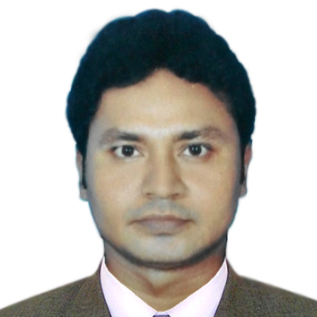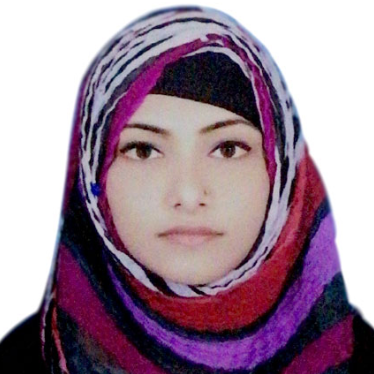International Journal of Information Technology and Computer Science (IJITCS)
IJITCS Vol. 11, No. 7, 8 Jul. 2019
Cover page and Table of Contents: PDF (size: 678KB)
A Robust Functional Minimization Technique to Protect Image Details from Disturbances
Full Text (PDF, 678KB), PP.1-8
Views: 0 Downloads: 0
Author(s)
Index Terms
Image enhancement, dual projection, total variation regularizer, functional minimization
Abstract
Image capturing using faulty systems or environmental vulnerabilities always degrade the image quality and causes the distortion of true details from the original imaging signals. Thus a robust way of image enhancement and edge preservation is an enormously requirement for smooth imaging operations. Although, many techniques have been deployed in this area during the decades for its betterment. However, the key challenges are remain towards better tradeoff between image enhancement and details protection. Therefore, this study inspects the existing limitations and proposes a robust technique based on functional minimization scheme in variational framework for ensuring better performance in case of image enhancement and details preservation simultaneously. A vigorous way to solve the minimization problem is also develop to make sure the efficiency of the proposed technique than some other traditional techniques.
Cite This Paper
Robiul Islam, Chen Xu, Yu Han, Sanjida Sultana Putul, Rana Aamir Raza, "A Robust Functional Minimization Technique to Protect Image Details from Disturbances", International Journal of Information Technology and Computer Science(IJITCS), Vol.11, No.7, pp.1-8, 2019. DOI:10.5815/ijitcs.2019.07.01
Reference
[1]K. W. Hung and W. C. Siu, “Single-image super-resolution using iterative Wiener filter based on nonlocal means,” Signal Process. Image Commun., vol. 39, pp. 26–45, Nov. 2015.
[2]M. K. PK and M. M. Rahman, “Metal Artifact Reduction from Computed Tomography (CT) Images using Directional Restoration Filter,” Int. J. Inf. Technol. Comput. Sci., vol. 6, no. 6, pp. 47–54, May 2014.
[3]X. Wang, H. Wang, J. Yang, and Y. Zhang, “A new method for nonlocal means image denoising using multiple images,” PLoS One, vol. 11, no. 7, pp. 1–9, Jul. 2016.
[4]V. Fedorov and C. Ballester, “Affine Non-Local Means Image Denoising,” IEEE Trans. Image Process., vol. 26, no. 5, pp. 2137–2148, May 2017.
[5]A. Li, D. Chen, K. Lin, and G. Sun, “Nonlocal Joint Regularizations Framework with Application to Image Denoising,” Circuits, Syst. Signal Process., vol. 35, no. 8, pp. 2932–2942, Aug. 2016.
[6]X. Nie, H. Qiao, B. Zhang, and X. Huang, “A Nonlocal TV-Based Variational Method for PolSAR Data Speckle Reduction,” IEEE Trans. Image Process., vol. 25, no. 6, pp. 2620–2634, Jun. 2016.
[7]W. Cheng and K. Hirakawa, “Minimum Risk Wavelet Shrinkage Operator for Poisson Image Denoising,” IEEE Trans. Image Process., vol. 24, no. 5, pp. 1660–1671, May 2015.
[8]S. Gai, B. Zhang, C. Yang, and L. Yu, “Speckle noise reduction in medical ultrasound image using monogenic wavelet and Laplace mixture distribution,” Digit. Signal Process. A Rev. J., vol. 72, pp. 192–207, Jan. 2018.
[9]A. Li, D. Chen, G. Sun, and K. Lin, “Sparse representation-based image restoration via nonlocal supervised coding,” Opt. Rev., vol. 23, no. 5, pp. 776–783, Oct. 2016.
[10]T. Huang, W. Dong, X. Xie, G. Shi, and X. Bai, “Mixed noise removal via laplacian scale mixture modeling and nonlocal low-rank approximation,” IEEE Trans. Image Process., vol. 26, no. 7, pp. 3171–3186, Jul. 2017.
[11]K. S. Zhang, L. Zhong, and X. Y. Zhang, “Image Restoration via Group l2,1 Norm-Based Structural Sparse Representation,” Int. J. Pattern Recognit. Artif. Intell., vol. 32, no. 04, p. 1854008, Apr. 2018.
[12]E. Ehsaeyan, “A new shearlet hybrid method for image denoising,” Iran. J. Electr. Electron. Eng., vol. 12, no. 2, pp. 97–104, 2016.
[13]H. Al-Marzouqi and G. AlRegib, “Curvelet transform with learning-based tiling,” Signal Process. Image Commun., vol. 53, pp. 24–39, Apr. 2017.
[14]G. Baloch and H. Ozkaramanli, “Image denoising via correlation-based sparse representation,” Signal, Image Video Process., vol. 11, no. 8, pp. 1501–1508, May 2017.
[15]K. Mechlem, S. Allner, K. Mei, F. Pfeiffer, and P. B. Noël, “Dictionary-based image denoising for dual energy computed tomography,” 2016, p. 97830E.
[16]Liu, “Image denoising via adaptive soft-thresholding based on non-local samples,” in Proceedings of the IEEE Computer Society Conference on Computer Vision and Pattern Recognition, 2015, vol. 07–12–June, pp. 484–492.
[17]X. Xu and T. Bu, “An Adaptive Parameter Choosing Approach for Regularization Model,” Int. J. Pattern Recognit. Artif. Intell., vol. 32, no. 08, p. 1859013, Aug. 2018.
[18]T. Veerakumar, R. P. K. Jagannath, B. N. Subudhi, and S. Esakkirajan, “Impulse Noise Removal Using Adaptive Radial Basis Function Interpolation,” Circuits, Syst. Signal Process., vol. 36, no. 3, pp. 1192–1223, Mar. 2017.
[19]H. A. Alnabriss and I. S. I. Abuhaiba, “Improved Image Retrieval with Color and Angle Representation,” Int. J. Inf. Technol. Comput. Sci., vol. 6, no. 6, pp. 68–81, May 2014.
[20]G. Aubert and P. Kornprobst, Mathematical problems in image processing: partial differential equations ... Springer, 2001.
[21]D. Wang and J. Gao, “An improved noise removal model based on nonlinear fourth-order partial differential equations,” Int. J. Comput. Math., vol. 93, no. 6, pp. 942–954, Jun. 2016.
[22]X. Y. Liu, C. H. Lai, and K. A. Pericleous, “A fourth-order partial differential equation denoising model with an adaptive relaxation method,” Int. J. Comput. Math., vol. 92, no. 3, pp. 608–622, Mar. 2015.
[23]Z. Tu, W. Xie, J. Cao, C. van Gemeren, R. Poppe, and R. C. Veltkamp, “Variational method for joint optical flow estimation and edge-aware image restoration,” Pattern Recognit., vol. 65, pp. 11–25, May 2017.
[24]Y. Han, C. Xu, and G. Baciu, “A variational based smart segmentation model for speckled images,” Neurocomputing, vol. 178, pp. 62–70, 2016.
[25]Y. Han, C. Xu, G. Baciu, M. Li, and M. R. Islam, “Cartoon and Texture Decomposition-Based Color Transfer for Fabric Images,” IEEE Trans. Multimed., vol. 19, no. 1, pp. 80–92, Jan. 2017.
[26]P. Liu, L. Xiao, and J. Zhang, “A fast higher degree total variation minimization method for image restoration,” Int. J. Comput. Math., vol. 93, no. 8, pp. 1383–1404, Aug. 2016.
[27]Y. Han, C. Xu, G. Baciu, and X. Feng, “Multiplicative noise removal combining a total variation regularizer and a nonconvex regularizer,” Int. J. Comput. Math., vol. 91, no. 10, pp. 2243–2259, Oct. 2014.
[28]V. B. S. Prasath, D. Vorotnikov, R. Pelapur, S. Jose, G. Seetharaman, and K. Palaniappan, “Multiscale tikhonov-total variation image restoration using spatially varying edge coherence exponent,” IEEE Trans. Image Process., vol. 24, no. 12, pp. 5220–5235, Dec. 2015.
[29]P. Getreuer, “Total Variation Inpainting using Split Bregman,” Image Process. Line, vol. 2, pp. 147–157, May 2012.
[30]Y. Han, X. C. Feng, G. Baciu, and W. W. Wang, “Nonconvex sparse regularizer based speckle noise removal,” Pattern Recognit., vol. 46, no. 3, pp. 989–1001, 2013.
[31]M. Nikolova, M. K. Ng, and C. P. Tam, “Fast nonconvex nonsmooth minimization methods for image restoration and reconstruction,” IEEE Trans. Image Process., vol. 19, no. 12, pp. 3073–3088, Dec. 2010.
[32]Z. Zuo, W. Yang, X. Lan, L. Liu, J. Hu, and L. Yan, “Adaptive nonconvex nonsmooth regularization for image restoration based on spatial information,” Circuits, Syst. Signal Process., vol. 33, no. 8, pp. 2549–2564, Aug. 2014.
[33]J. Mejia, B. Mederos, R. A. Mollineda, and L. O. Maynez, “Noise Reduction in Small Animal PET Images Using a Variational Non-Convex Functional,” IEEE Trans. Nucl. Sci., vol. 63, no. 5, pp. 2577–2585, Oct. 2016.
[34]L. I. Rudin, S. Osher, and E. Fatemi, “Nonlinear total variation based noise removal algorithms,” Phys. D Nonlinear Phenom., vol. 60, no. 1–4, pp. 259–268, 1992.
[35]A. Chambolle, “An Algorithm for Total Variation Minimization and Applications,” J. Math. Imaging Vis., vol. 20, no. 1, pp. 89–97, Jan. 2004.
[36]H. Yu, L. Zhao, and H. Wang, “An efficient procedure for removing random-valued impulse noise in images,” IEEE Signal Process. Lett., vol. 15, pp. 922–925, 2008.
[37]C. Sutour, J. F. Aujol, C. A. Deledalle, and J. P. Domenger, “Adaptive regularization of the NL-means for video denoising,” 2014 IEEE Int. Conf. Image Process. ICIP 2014, vol. 23, no. 8, pp. 2704–2708, Aug. 2014.
[38]A. N. Tikhonov and V. I. A. Arsenin, Solutions of Ill-Posed Problems, 1st ed. Winston, 1977.




